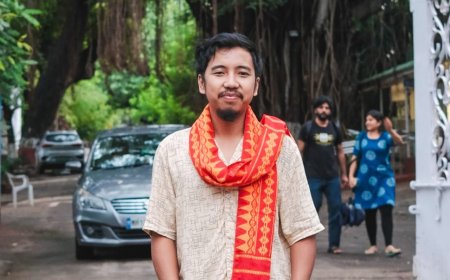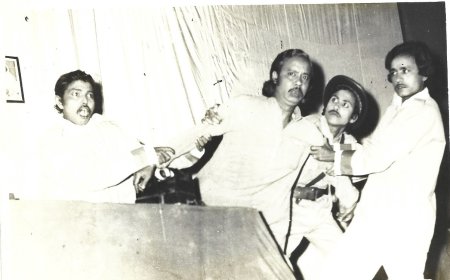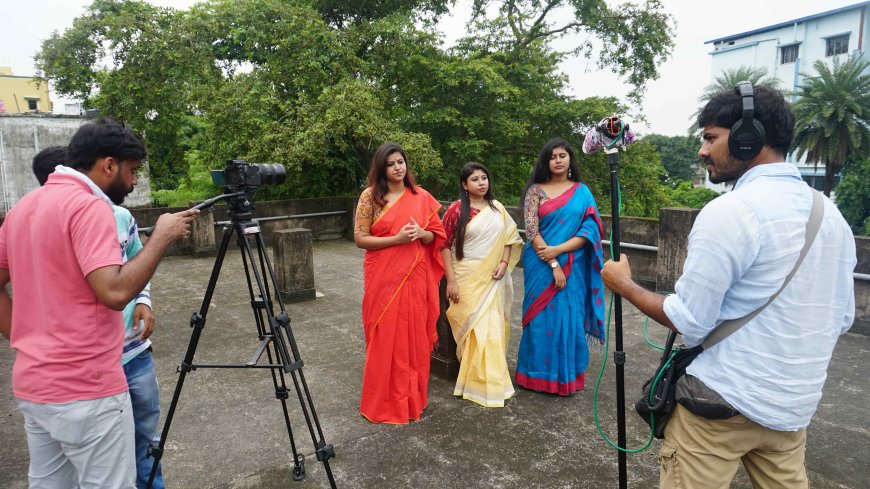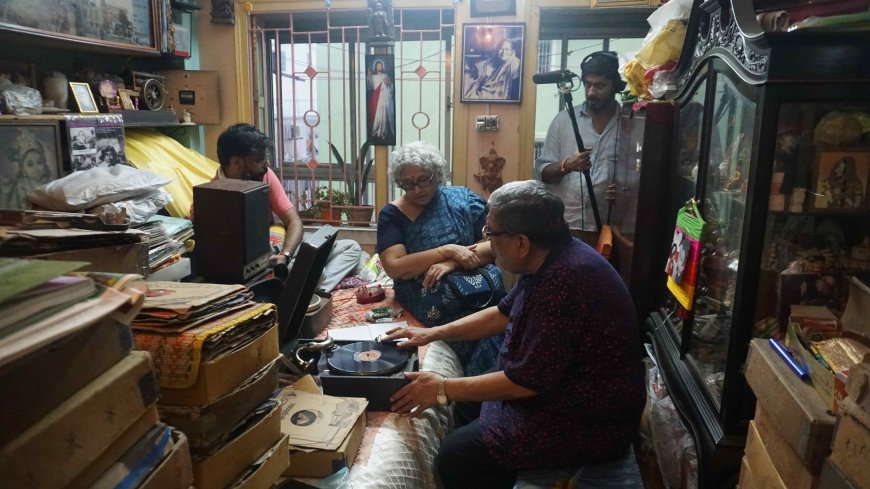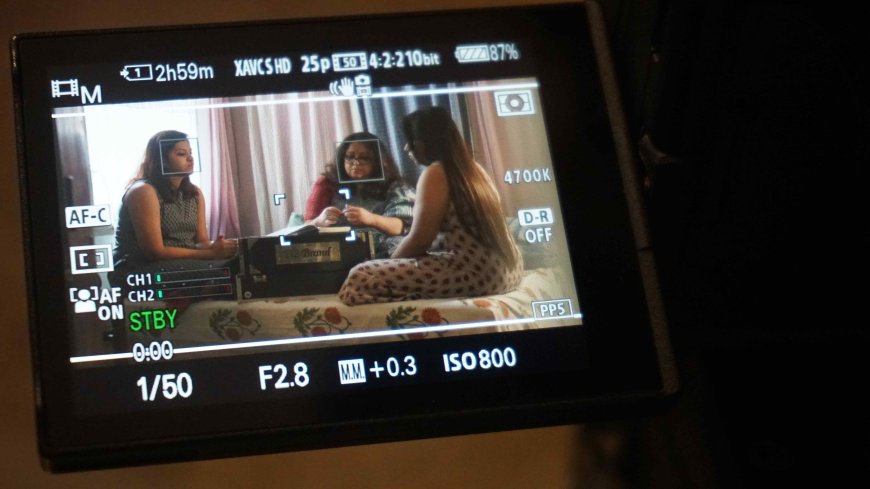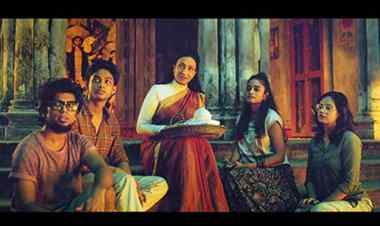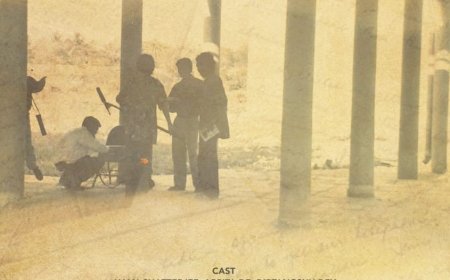SUBHA DAS MULLICK’S DOCUMENTARY REJUVENATION
Dr. Shoma A. Chatterji interviews with Subha Das Mulllick on her wonderful documentary MUSIC OF REJUVENATION
Subha Das Mullick is a renowned documentary filmmaker, writer and a much-in-demand cinema teacher across schools in Kolkata and beyond. Among her many films, one may mentionBirbhum Terracotta (1998), Trial by Fire (2002), Crosswinds at Icchamoti (2012),Calcutta Sonata(2018),City Symphonies, Dwelling in Travelling on the Jewish community in Kolkata, and many more. She has recently made a beautiful documentary called Music of Rejuvenation which will be showcased in Kolkata on May 8, on the occasion of Rabindranath Tagore’s Birth Anniversary.
It is a lovely film which is not only educative and informative but also very enriching. Though it is filled with talking heads, the director has managed to span an entire world of experts on different schools of music such as veteran experts in Indian and Occidental Schools of music, collector of old gramophone records, the owner of a recording company, singers and teachers of music and so on. The film actually digs deep into the mutual influence of Oriental and Occidental music we know very little about. The visuals span across old locations of North Kolkata.
What was the basic motivation behind making this unusual film?
Music of Rejuvenation is like Part II to my other film City Symphonies produced by Films Division. The two films were made together. Initially I had called it City Symphonies Part II, but since FD decided to take only one film, I had to change the name of the film to Music of Rejuvenation.
In City Symphonies I have shown how in the late 18th century the west responded to Indian musical ethos and tried to adapt Indian music in their own way.
In Music of Rejuvenation I have shown how in the 19th Century Bengalis adapted western ideas into their compositions and changed Bengali music for ever.
The film begins with Lebedev of who I learnt a lot from Ashoke Viswanathan's tele series for DD years ago. But how does Lebedev fit into a documentary on the history of music?
The film begins with Lebedev, who wrote the Bengali proscenium plays in the fag end of the 18th century. He used a very popular Bengali song in his play and gave it a western twist. That is why the name of this segment is “A play and a song”.
I begin with the reading of the play because I find the Bengali language of the play funny and outlandish. I am trying to imply very obliquely that even at the fag end of the 18th century Bengali was not the lingua franca of Calcutta. The Bengalis had not yet risen to prominence in Calcutta, even though a lot of excellent songs were being composed in Bengali. The last part of City Symphonies deals with this aspect.
The film demanded a lot of field research, library research and documentary research. How did you do it and how long did it take?
MOR is by no means a comprehensive history of modern Bengali music. It is rather impressionistic in its treatment. One can go deep into each of the areas included in the film. And I have left out so much. I wanted to include Vivekananda, Jyotirindra Moitra. I wanted to include songs in Bengali plays. As for my research, basically the resource persons have brought their respective expertise with them. I have only packaged it. Also, a lot of research has been left out of the final film.
The names and positions of the people interviewed.
The resource persons are:
Debashish Roychowdhury - singer and somebody who has done a lot of research on history of Bengali music
Rohini Roychowdhury - singer
Sarvali Gooptu - An expert on Dwijendralal’s music, singer
Sourendro - Soumyojit - Indian music duo whose repertoire spreads across different genres. Sourendro is an Indian pianist, who specializes in playing Indian ragas on the piano.
Susanta Chatterjee - Record collector
Sovan Saha - proprietor of Hindusthan Records.
You seem to have shot on locations of North Calcutta. Where all did you shoot?
Yes. Shooting has been done mainly in north and central Calcutta - Nakhoda Masjid area, Marble Palace and its neighbourhood, Chitpur Road, Ezra Street, the Mullik mansion of Pathuriaghata and banks of Ganga. We had given an application at Lal Bazar for permission. So it was not a problem.
You have covered a vast range of music right across the film. Why?
Yes. The range of music covered is quite daunting. But the western bits (Beethoven etc) are just for setting the backdrop - that Bengalis were developing a ear for western music and and also learning to play this music.
How long did it take from conception to censor certificate?
Getting the film into shape and giving a flow to the film took a long time. Both the films - City Symphonies and MOR were completed in a little more than a year’s time. But I played with the fine tuning of the edit of MOR for quite a while. I have also taken some shots from Calcutta Sonata - my 2018 film on piano.
In which genre would you choose to slot the film?
Music of Rejuvenation is not a musical. It is about history of music.
What is your Directorial statement?
In this film I have tried to capture various influences that have shaped Bengali music to what it is today. Calcutta has always been a melting pot of cultures. I have tried to give a glimpse of the confluence of cultures and ideas in this city and how new ideas are born in this melting pot. In a way, it is also the story of the rise of the Bengali ‘bhadralok’.
I have tried to contextualize whatever the individual experts brought with them and were comfortable performing. But there are also scripted portions which are enacted - specially the Theatrewalas and the interaction between the two boys. Even Sourendro Soumyojit have enacted some portions of the script.
The literary interludes have been carefully selected - mainly from Hutom Pyachar Naksha and Reminiscences of Jyotirindranath and Rabindranath Tagore. The concluding verse is my own composition.
What I find most fascinating in the film is the way Sourendro has played Indian ragas on the piano. I was determined to retain the entire Megha Malhar recital in the film. I find this mesmerizing.
What's Your Reaction?




































